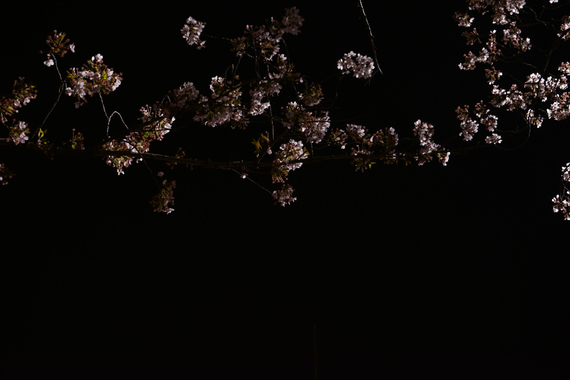
Seong jin An, Sakura-Sakura (2014) 42.5 X 63.8 inches, injet print, face mounted on Plexiglas, image: courtesy of the artist
When you first encounter the photographic works of Seong Jin An at the Tenri Cultural Institute Gallery, you see images of beauty in the form of blossoming branches stark against a black or white ground. These are Sakura or Cherry Blossoms captured in understated focus implying movement and time during late day and evening.
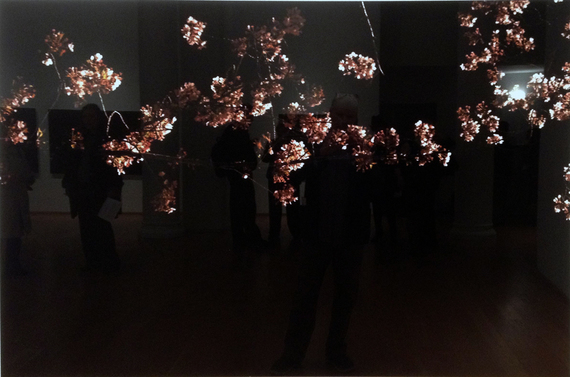
Seong jin An, Sakura-Sakura (with ambient reflections) (2014) 42.5 X 63.8 inches, injet print, face mounted on Plexiglas, image: courtesy of the author
The second thing you will notice is a reflection of yourself, and perhaps a few people that might be passing by and around you, in the Plexiglas that holds the photographs steady and flat to the wall. This intrusion into the image is an unpredictable, shifting reference to wabi-sabi, the Japanese aesthetic of things that are imperfect, transient, and incomplete, which is similar to the Buddhist teachings of impermanence. This combination of the modest representation of subject matter, and the ever changing reflected surface that joins the image, bridges your unconscious to consciousness that in turn, brings to mind the man-made disturbances in our environment and our social systems. A key concern of the artist.
This skillful, albeit subliminal message of the still photography is further clarified in An's video installation Sakura-Sakura (2014)*. The video has three phases. The first is a still view of hazy blossoming branches against a white backdrop where the artist writes slowly and in sequence, his thoughts about the relationship between the Japanese people and nature, hometown and earth, and a willingness to "remain in Tokyo and Fukushima after the great earthquake." In the end, he finds answers in the knowledge that "Harmony and peace are pursued through re-examination of the good" despite the fact that "some Japanese lament the lack of a sense of danger". A puzzling dichotomy for outsiders.
Next we have a variety of branches and backdrops only now there is movement, most likely created in some computer animation program, of petals falling from the naturally aging flowers. Finally, there are still shots of unrest and protest in contemporary Japanese life giving even greater focus to the concerns of the artist regarding sustainability, pollution and green science. The three stages of the video tell a story of a quickly changing world and the ability nature has had to withstand the onslaught and maintain its natural progressions. A truth that is becoming more and more clear each day.
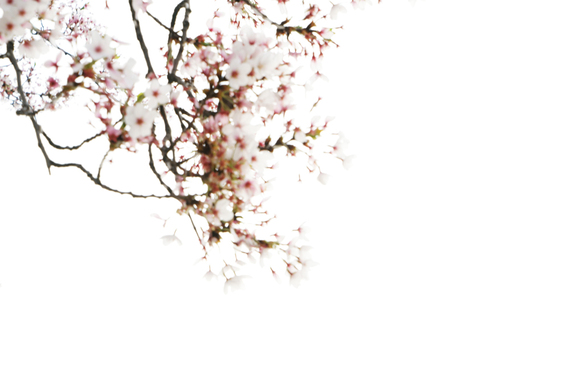
Seong jin An, Sakura-Sakura (2014) 42.5 X 63.8 inches, injet print, face mounted on Plexiglas, image: courtesy of the artist
After the message sinks in we are left with the subject matter -- hauntingly beautiful images that dance across the picture plane from one side to the middle and beyond like a newly, and quickly forming fissure in the earth. A crack that, with all of its trouble and turbulence, brings change and reminds us that we stand upon a living thing, a planet that will give us all we need if we are patient and sensitive to its natural rhythms.
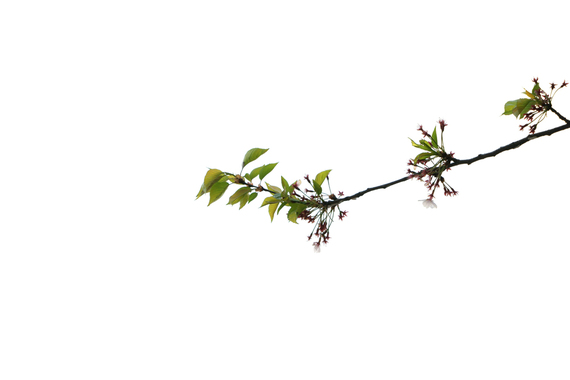
Seong jin An, Sakura-Sakura (2014) 42.5 X 63.8 inches, injet print, face mounted on Plexiglas, image: courtesy of the artist
An also addresses the spiritual side of existence. In one work, one of two square format photographs that at first seemed only to hold highly pixilated golden browns and yellows on the bottom left corner, has the faintest image of a face emerging from the darkness.
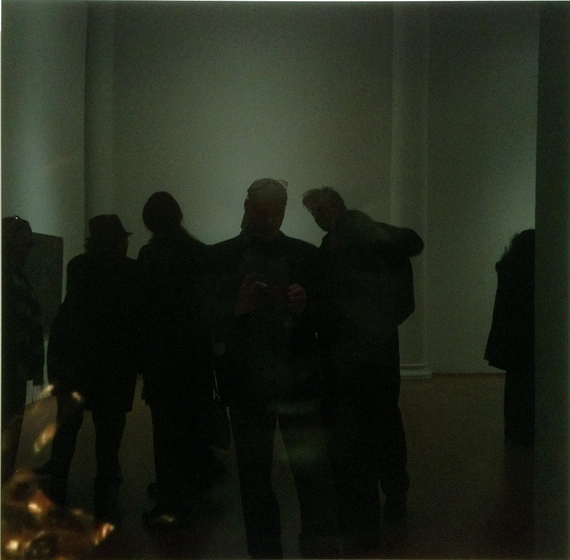
Seong jin An, Sakura-Sakura (with ambient reflections) (2014) 42.5 X 42.5 inches, injet print, face mounted on Plexiglas, image: courtesy of the author
It took me a while to notice this hidden Buddha as it was obscured by the reflective nature of the Plexiglas, but I am very glad I did. I am a firm believer in the artist rewarding those who take the time to look, as too many gallery and museum visitors do not take the time to fully and openly see the art. It's like the difference between hearing and listening -- part of An's message is that you must have sensitivity to perceive and identify.
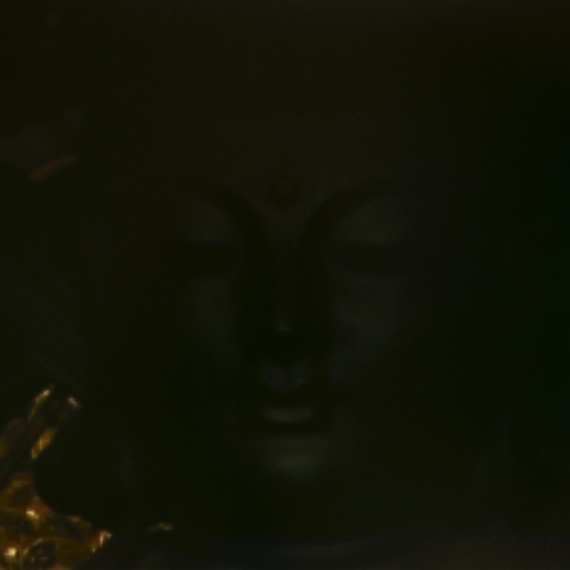
Seong jin An, Sakura-Sakura (2014) 42.5 X 42.5 inches, injet print, face mounted on Plexiglas, image: courtesy of the artist
Born in Japan of Korean parents, An now spends half his time in Japan and the other half in Korea documenting his observations. This split in living, social practices, aesthetics and environment affords him the ability to step back a bit more to get a sense of the whole picture, as his concerns are not just a fact of life in Asia or the Pacific Rim, but in all corners of the earth. We owe artists like AN a debt of gratitude as he fights the good fight expressing concerns of a sick planet with the chance for positive change in our hearts and minds.

Seong jin An, Sakura-Sakura (2014) 42.5 X 63.8 inches, injet print, face mounted on Plexiglas, image: courtesy of the artist
*All the works in the exhibition are titled Sakura-Sakura (2014) and can be distinguished by their size and placement in the gallery.
